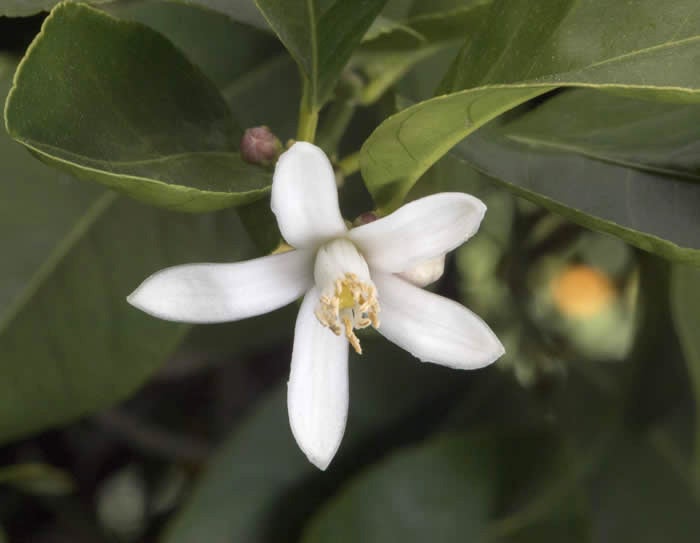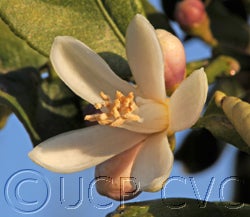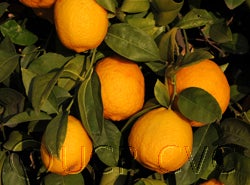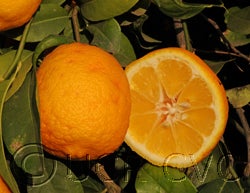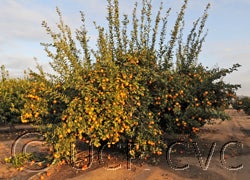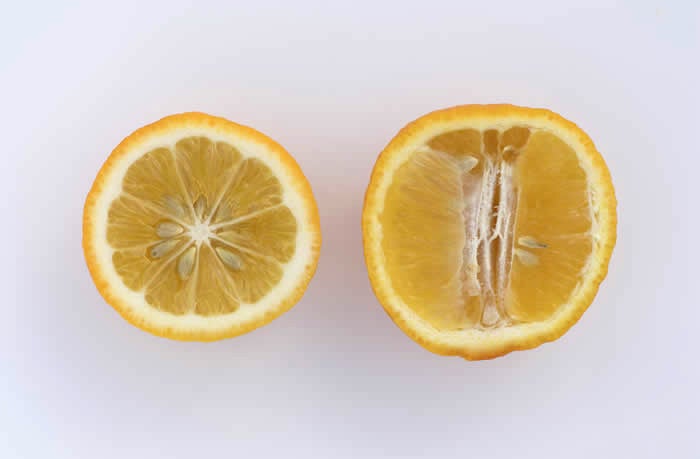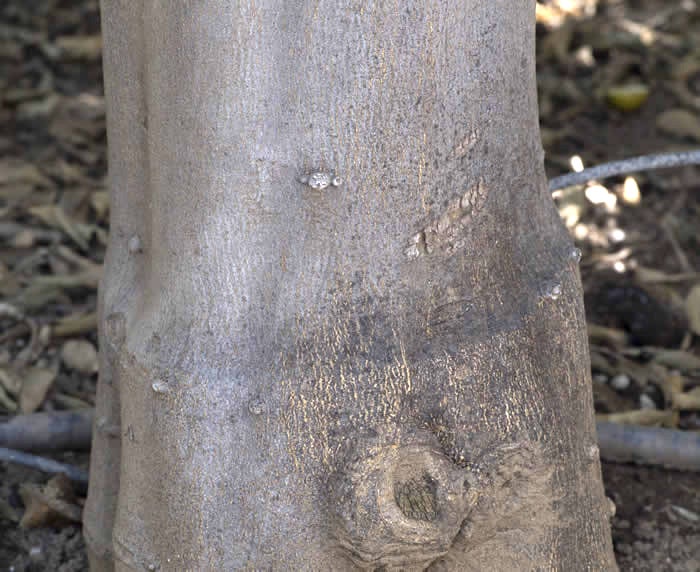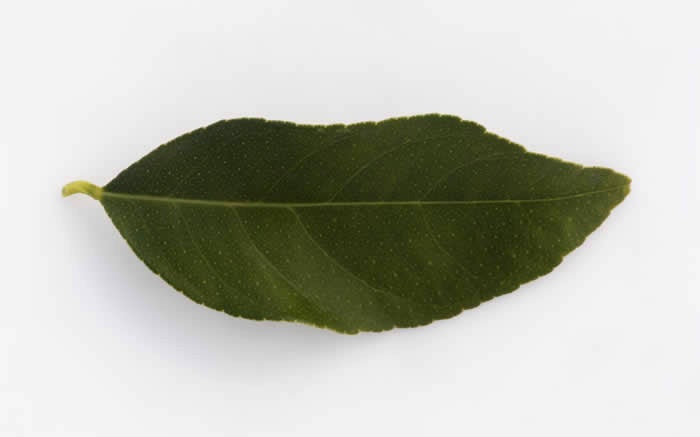Citrus volkameriana
Citrus limonia Osbeck
CRC 3050
PI 539335
VI 407
Source
Received as seed from Acireale, Sicily, 1955.
Parentage/origins
♀ sour mandarin (C. reticulata) × ♂ citron (C. medica).
Rootstocks of accession
Yuma Ponderosa lemon
Season of ripeness at Riverside
The main crop is winter and early spring.
Notes and observations
11/13/1987, EMN: This is a moderately large, oval, seedy lemon, not as elongate as most lemons and has no nose. Flavor lemon-like. Rind color dark yellow to almost orange-yellow.
10/1988, EMN: Name changed on records from C. volckameriana to Volckamer lemon.
3/2/17, TS and DK: Tastes more like a sour orange; not as unpleasant as one might expect.
Availability
Commercially available in California through the Citrus Clonal Protection Program. Click here to order budwood.
USDA Germplasm Resources Information Network page for Volkamer lemon
What is Volkamer lemon?
Curk et al. (2016) verifies that Volkamer lemon originated from a cross of ♀ sour mandarin (C. reticulata) × ♂ citron (C. medica) – the same combination that gave rise to Rangpur lime and rough lemon. This work notes that “Based on cytogenetic evidence, Carvalho et al. (2005) considered that ‘Volkamer’ lemon originated from mandarin x citron like ‘Rough’ lemon and ‘Rangpur’ lime. Our results agree with the last hypothesis, and both cytoplasmic and nuclear data point to a very close relationship between ‘Rough’ lemon and ‘Volkamer’ lemon." On the Citrus Variety Collection website Volkamer lemon therefore is classed with the rough lemons, as the taxon with which it appears to be most closely affiliated.
“Volkamer” or “Volckamer”?
Both spellings are common in scientific and popular literature. Volkamer lemon is named after Johann Christoph Volkamer (1644–1720), a German botanist who wrote the Nürnbergische Hesperides (Nuremberg Hesperides), a citrus treatise published in two parts. The first volume, published in 1708, shows only the initials of the author’s name, “J. C. V.”; but the second volume, published in 1714, gives his full name, Johann Christoph Volkamer. Other German families used the alternative spelling “Volckamer”, but the German botanist clearly spelled his name “Volkamer.”
The first scientific publication claiming species status for this genotype (Pasquale, 1867) called it Citrus volkameriana, with no “c” between the “l” and “k”, so this is unquestionably the correct spelling.
In the early 19th century, two important citrus works, Gallesio’s Traité de Citrus (1811) and Risso & Poiteau’s Histoire Naturelle des Orangers (1818-1822), both spelled the botanist’s name as “Volcamerius”, with a “c” – very likely because the letter “k” was rarely used in Latin at that time.
In both the first and second editions of The Citrus Industry, Vol. 1 (1943 and 1967, respectively), the botanist’s name was spelled as “Volckamer,” and these books have been a standard reference for citrus studies.
Many scientific publications have have followed The Citrus Industry in using the spellings “Volckamer” and “Citrus volkameriana,” but “Volckamer” and “Citrus volkameriana” clearly are correct.
Thanks to Prof. Dr. Iris Lauterbach (whose high-quality reprint of Nürnbergische Hesperides will appear some day!) and Mr. Reichel Steffen for their comments regarding the spelling of “Volkamer.”
Literature Cited
Carvalho, R., Soares Filho, W. S., Brasileiro-Vidal, A. C., and Guerra, M. 2005. The relationships among lemons, limes and citron: a chromosomal comparison. Cytogenetic and genome research, 109(1-3):276-282.
Curk, F., Ollitrault, F., Garcia-Lor, A., Luro, F., Navarro, L., and Ollitrault, P. 2016. Phylogenetic origin of limes and lemons revealed by cytoplasmic and nuclear markers. Annals of botany, 117(4):565–583.
Gallesio, G., 1811. Traité du citrus. Fantin.
Pasquale, G.A. 1867. Catalogo del real orto botanico di Napoli. Naples: Ghio.
Risso, A. and Poiteau, A. 1818-1822. Histoire naturelle des orangers. Paris: Herissant Le Doux.
Swingle, W.T. 1943. The botany of Citrus and its wild relatives of the orange subfamily. In H.J. Webber and L.D. Batchelor [eds.], The citrus industry, Vol. I. Berkeley: University of California Press, 129-474.
Swingle, W.T. and Reece, P.C. 1967. The botany of Citrus and its wild relatives. In Reuther, W.; Webber, H.J. Batchelor, L.D. (eds.) The citrus industry vol 1, 2nd edn. Berkeley: University of California Press, 190-430.
